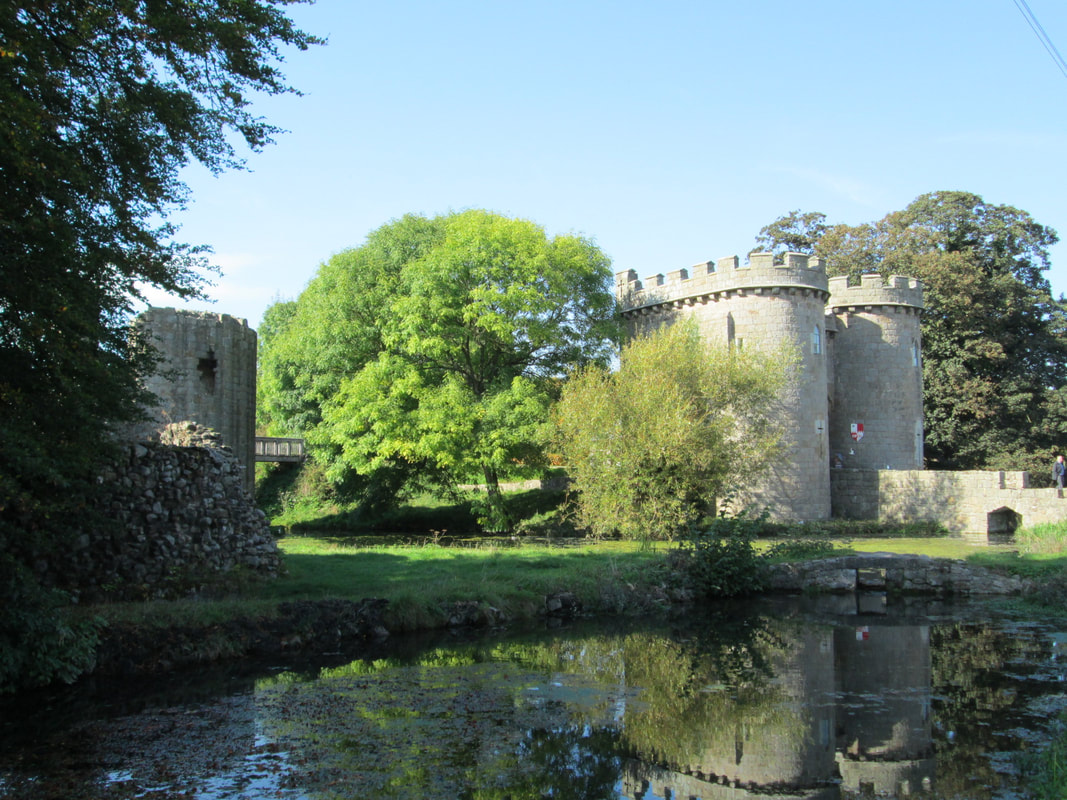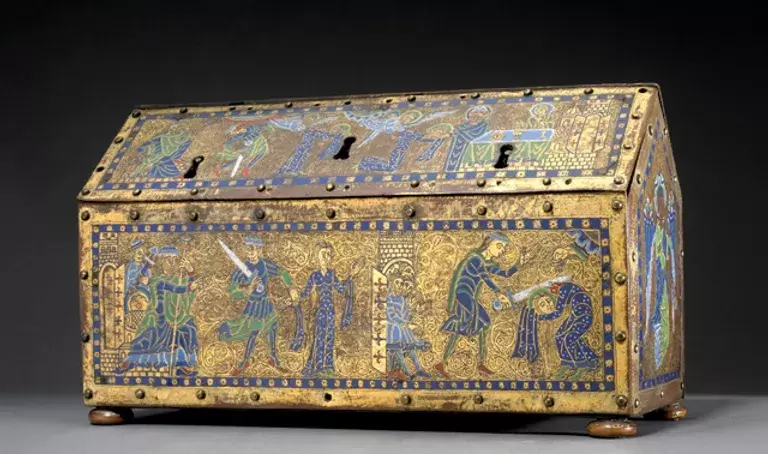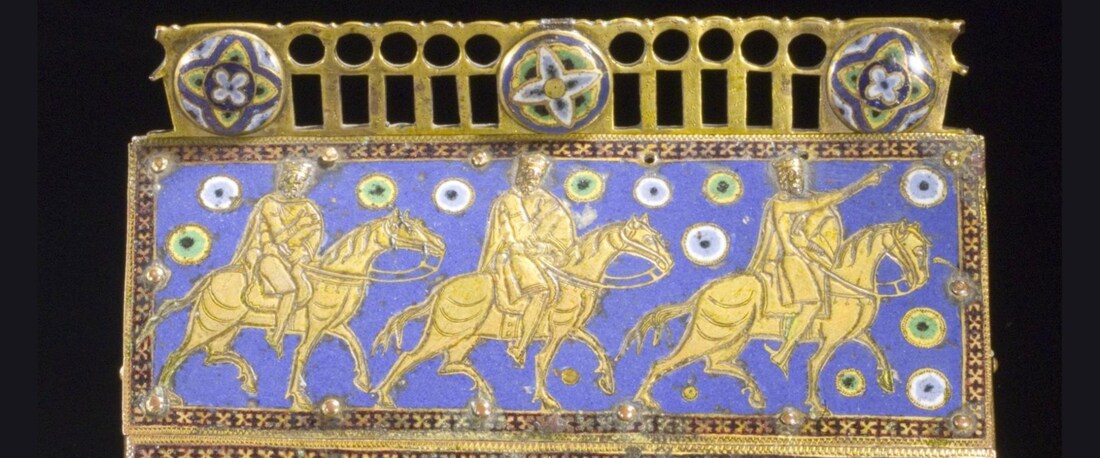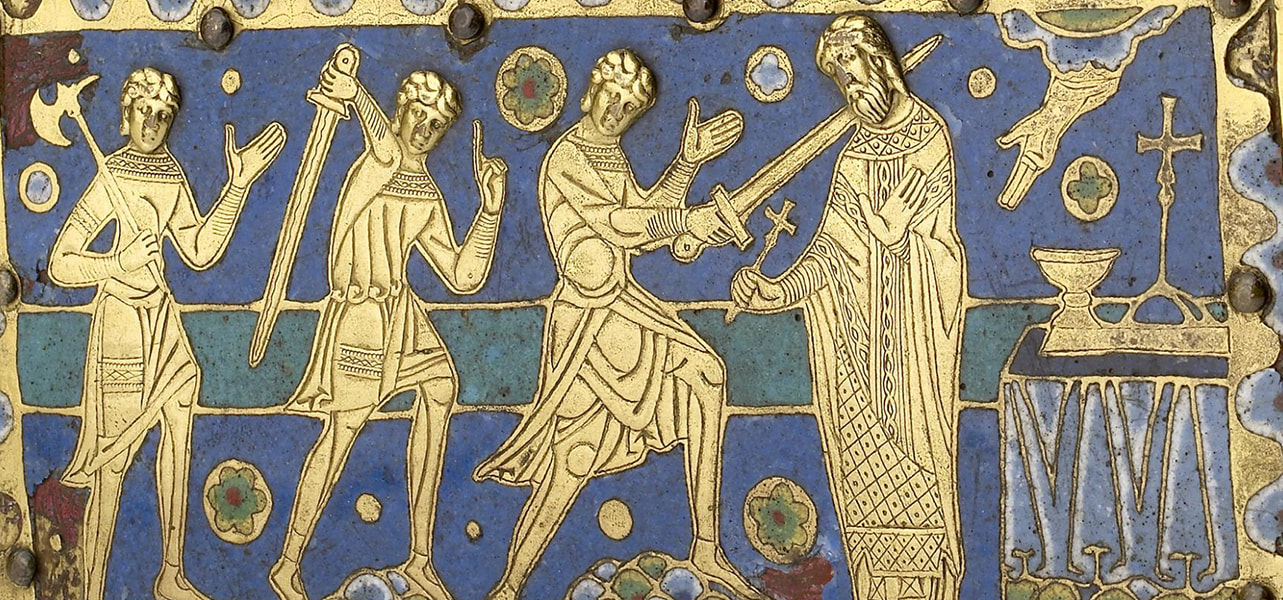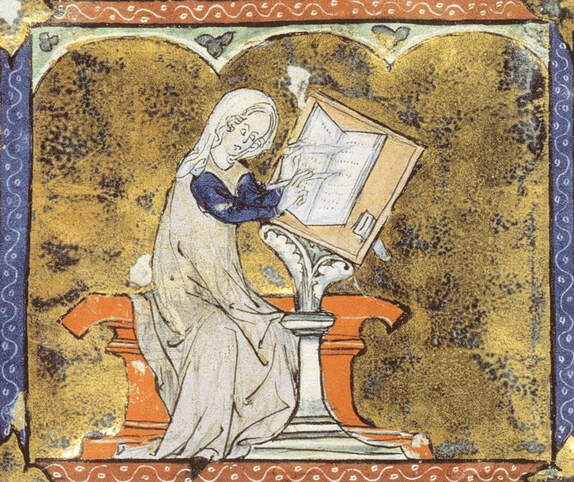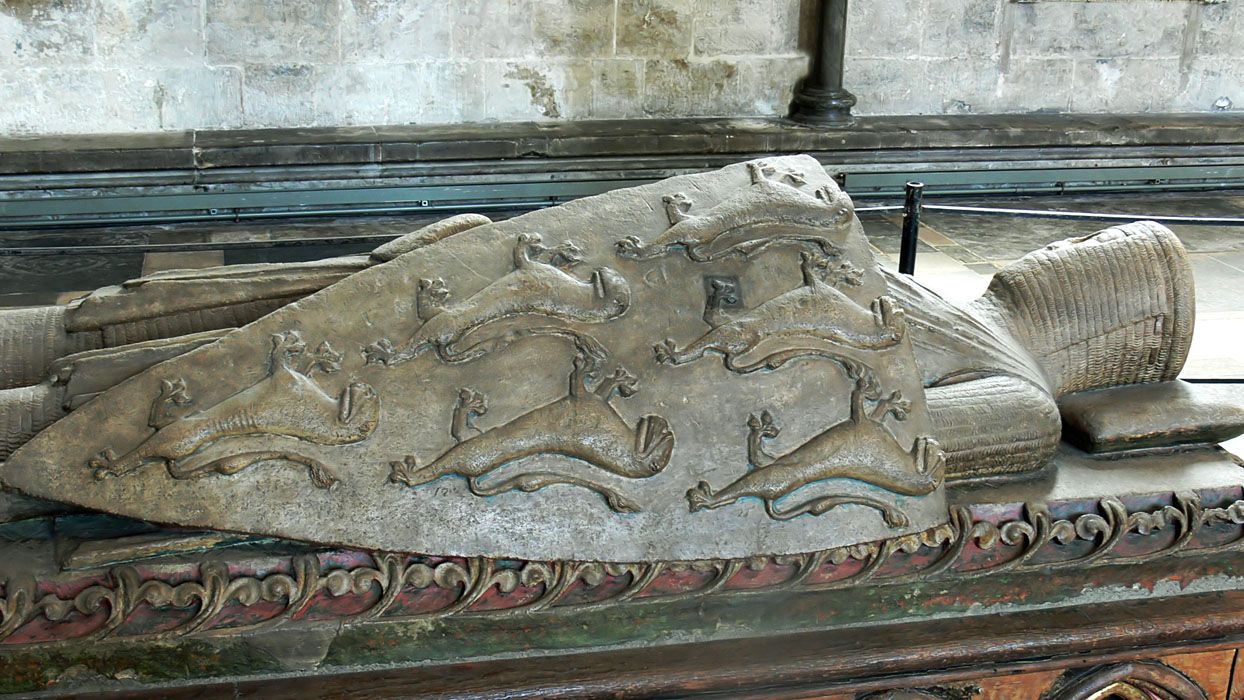|
The rapacious but hapless king who usurps the English crown from his brother cruelly seizing the property of his subjects. A noble outlaw opposed to this evil king, and his adventures in Angevin England. If this story sounds familiar, it's not the story of Robin Hood, but of a hero who was arguably more famous in medieval England: Fulk FitzWarin. Curtis Rager and Dia Kefalas explain the historical background to the romance, its form and crazy manuscript context, and how it fits into the real world of baronial revolt and the Robin Hood mythology. Bibliography:
Keen, Maurice. “The Romance of Fulk Fitzwarin.” In The Outlaws of Medieval Romance. New York: Routledge, 2000. White-Le Goff, Myriam. "Entre Histoire et mythe: Quand il faut être un héros pour être hors-la-loi." Cahiers de recherches médiévales et humanistes, no. 18 (November 20, 2009): 293–305. https://doi.org/10.4000/crm.11714. Pensom, Roger. "Inside and Outside: Fact and Fiction in 'Fouke le Fitz Waryn.'" Medium Ævum 63, no. 1 (1994): 53–60. https://doi.org/10.2307/43629615. Dolmans, Emily, "Locating the Border: Britain and the Welsh Marches in Fouke le Fitz Waryn." New Medieval Literatures 16 (2016): 109–134. Williams, Alison. “Stories within Stories: Writing History in Fouke le Fitz Waryn.” Medium Ævum 81, no. 1 (2012): 70–87. https://doi.org/10.2307/43632901.
0 Comments
In the twelfth century, the city of Limoges was the site of the mass production of beautiful and ornate metal champlevé boxes, over 700 of which have survived. Many of these boxes were used as reliquary caskets. But how were these intricate boxes built? Why in Limoges?And what does the wide diffusion of these objects say about the cults of particular saints, like that of Saint Thomas Becket? Carmeliz Ramas-Fisk, Frances Eshleman, and John Keirouz walk us through the technical, religious, cultural, and political aspects of these fascinating objects. While you're listening, check out the links to a thirteenth-century reliquary casket in Edinburgh, a reliquary of Saint Valerie currently in Limoges, and a reliquary of Saint Thomas Becket now in the Ashmolean Museum in Oxford. Bibliography:
“13th Century Reliquary Casket.” National Museums Scotland. Accessed November 17, 2022. https://www.nms.ac.uk/explore-our-collections/stories/global-arts-cultures-and-design/13th-century-reliquary-casket/ “Châsse reliquaire de Sainte-Valérie.” Centre de la Culture de Limousin Médiéval. Accessed November 16, 2022. https://en.limousin-medieval.com/chsses-sainte-valerie. Hahn, Cynthia. 2010. “What Do Reliquaries Do for Relics?” Numen 57 (3/4): 284–316. Koopmans, Rachel. 2015. “Visions, Reliquaries, and the Image of ‘Becket’s Shrine’ in the Miracle Windows of Canterbury Cathedral.” Gesta 54 (1): 37–57. https://doi.org/10.1086/679400. O’Neill, John Philip, ed. Enamels of Limoges, 1100–1350. New York: The Metropolitan Museum of Art, 1996. https://www.metmuseum.org/art/metpublications/enamels_of_limoges_1100_1350. “Reliquary Casket of St Thomas Becket: Commemorating the death of St Thomas Becket.” c. AD1200. Accession AN2008.36. The Ashmolean Museum, Oxford, UK. https://www.ashmolean.org/reliquary-casket-st-thomas-becket. “Reliquary of the Journey and Adoration of the Magi.” c. 1200. Accession 2019.423a, b. The Met Cloisters, New York, NY. https://www.metmuseum.org/art/collection/search/834048. Rubinstein, Stella. “Some Limoges Reliquaries of the Late Twelfth Century.” Arts & Decoration (1910-1918) 7, no. 6 (1917): 304–22. http://www.jstor.org/stable/43799792. Slocum, Kay Brainerd. The Cult of Thomas Becket: History and Historiography through Eight Centuries. London and New York: Routledge, 2019. Stohlman, W. Frederick. “A Limoges Reliquary.” Record of the Museum of Historic Art, Princeton University 3, no. 1 (1944): 5–7. https://doi.org/10.2307/3774119. Swarzenski, Georg. 1951. “A Masterpiece of Limoges.” Bulletin of the Museum of Fine Arts 49 (275): 17–25. Webster, Paul. “Introduction. The Cult of St Thomas Becket: An Historiographical Pilgrimage.” In The Cult of St Thomas Becket in the Plantagenet World, c. 1170–1220. Paul Webster and Marie-Pierre Gelin, eds. Woodbridge: The Boydell Press, 2016. 1–24. Yvernault, Martine. “Reading History in Enamel: The Journey of Thomas Becket’s Experience from Canterbury to Limoges. In Canterbury: A Medieval City. Catherine Royer-Hemet, ed. Newcastle upon Tyne: Cambridge Scholars Publishing, 2010. 137–59. In this podcast Kelly Kornell and Peter DeBaecke explore the lai Lanval by Marie de France. Composed in the later twelfth century, this shorter work of Anglo-Norman literature explores the adventures of a poor and friendless knight at the court of king Arthur who experiences a tremendous reversal of fortune and is caught between a negligent lord and a vindictive lady. Kelly and Peter discuss noble beauty, largesse, and the cosmopolitan nature of the Angevin court- how might all of this have reflected the experiences of the mysterious Marie de France, whoever she was?
In this podcast, Maria Carriere and Rose Rugendorf introduce us to the tombs of two members of the Angevin dynasty, Count Geoffrey V the Fair of Anjou (d. 1151) and William Longespée, Earl of Salisbury. (d. 1226) They discuss the significance of their tombs, and their survival, and what we can learn from the heraldic decoration –most notably the patterned lions or lioncels– that appear on both men's shields. You can consult high quality images of the tombs as they look today: Geoffrey V in Le Mans cathedral (credit: Wikimedia Commons) and William Longespée in Salisbury Cathedral (credit: Wikimedia Commons) .
Bibliography: Amt, Emilie. "Ela Longespée's Roll of Benefits: Piety and Reciprocity in The Thirteenth Century," Traditio 64 (2009), 1-56. Brown, Elizabeth A.R., "The Oxford Collection of the Drawings of Roger de Gaignières and the Royal Tombs of Saint-Denis," Transactions of the American Philosophical Society 78:5 (1988), 1-74. Christophe, Delphine A.R., "La plaque de Geoffroy Planatenêt dans la cathédrale du Mans," Hortus Artium Medievalium 10 (2005), 75-80. Dressler, Rachel, "Cross-Legged Knights and Signification in English Medieval Tomb Sculpture," Studies in Iconography 21 (2000), 91-121. Fox, Paul A., "Crusading Families and the Spread of Heraldry," The Coat of Arms 3, 8.2 (2012), 59-84. Taburet-Delahaye, Elisabeth, "Effigy of Geoffrey Plantagenet," in Enamels of Limoges, 1100-1350. Edited by John P. O'Neill. (New York: Metropolitan Museum of Art, 1996) |
HIST 6077: Angevin EmpireThese podcasts were recorded by students in the Fordham University History Department Graduate Course HIST 6077 in Fall 2022. |
